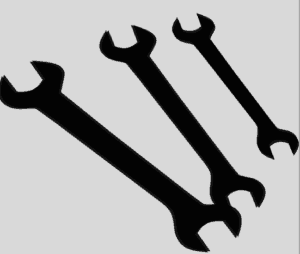A somewhat common issue with the Honda Pilot is the P0449 code. This code references a number that is given to you when you plug your Pilot into a OBD2 scanner. P0449 deals with the evaporative emissions control (EVAP) system. It often appears with, or is related other codes, such as P0420, P0446, and very often P0455.s
P0449: EVAP System – Vent Valve Solenoid – Circuit Malfunction
P0449 is normally not an immediate threat to the drive-ability of your Pilot. Certainly anytime the service engine soon light is on, it’s good to deal with it as soon as possible though. Also, a really good scanner will help you identify whether or not the valve is operating correctly. Most shops have them. There’s a link towards the bottom the page on exactly how to perform a quality diagnosis with a scan tool.
Honda Pilot P0449 Definition
P0449 is a universal OBDII trouble code. This means that regardless of which make or model of vehicle, the code will mean the same thing (Pilot or not, as long as it was manufactured after 1996).
P0449 indicates that the valve or solenoid circuit that controls the evaporation system is not functioning properly. The EVAP system cycles fuel vapor from the gas tank into the intake manifold, a charcoal canister, or directly into the air depending on the model of vehicle. When this system malfunctions, the fuel vapor is not being dealt with properly.
The ECM (Engine Control Module) of the vehicle has detected that there is a fault in the circuit which controls the vent that releases the fuel vapor from the system. This will be followed by the service engine soon light.
Honda Pilot P0449 OBDII Code Symptoms

P0449 code will typically not be accompanied by any noticeable symptoms other than the smell of gas and the service engine soon light. You may notice the slightest dip in fuel economy as well.
You should particularly notice the smell of fuel around the fuel tank area or fuel filler tube.
The EVAP system deals directly with fuel vapors. If these vapors are leaking from the system, you’ll often smell them faintly while operating the vehicle.
Pilot P0449 Trouble Code Causes
There are many things that can cause the P0449 trouble code to trigger in your Honda Pilot. Here are the most common problems that will throw the code along with a great video on the whole process:
- Fuel Cap– A bad fuel cap can cause the code to be thrown for sure. Often, you’ll get a message informing you that the fuel cap is off even when it is on. If you are getting that message, plus a P0449, it may save you a ton of time and money to replace the fuel cap and see if it goes away.
- EVAP System Hose– The hose that carries the fuel vapor from the fuel tank to the intake manifold can begin to leak. This will cause the P0449 code. Look for either a tear or hole in it. This is one of the most common issues that causes the code.
- Vapor Canister Purge Valve– One of the most common causes of the P0449 code is the vapor canister purge valve. It’s really easy to replace. There are a few clips that you need to find and remove. Here’s how to test a purge valve (YouTube).
- Fuse/Wiring Problems– If the wiring going to the valve has been compromise, it’ll lead to the P0449.
- Fuel Tank Sending Unit– It is possible for the gasket that attaches the fuel sending unit to the gas tank to go bad. This can reduce tank pressure and throw the code.
- Fuel Filler Neck– There is often a gasket where the fuel filler neck connects with the gas tank. This gasket can dry out, especially with vehicles that spend their time in dry climates. When it dries out, the fuel tank can’t hold pressure anymore, it may erroneously throw P0449.
P0449 Diagnosis- Honda Pilot
A mechanic has a wide range of instruments at his (or her) disposal to diagnose what would be causing the P0449 in your Honda Pilot. Here are the most common things that are done to diagnose the code:
- The mechanic will inspect the gas cap to make sure that it can handle pressure. If you are getting a warning that your gas cap is off, even when it’s on, replacing it will more than likely clear this code.
- The mechanic will typically check to see if there are any other trouble codes. The more trouble codes there are, the easier it can be to diagnose a problem. That’s because when they appear together in certain combinations, there will often only be only a few conditions that will throw any combination of codes at one time.
- After ascertaining what trouble codes appear with the P0449, the mechanic will typically inspect the EVAP system. This includes the purge valve, line, and canister.
- The fuel tank pressure will be checked and monitored.
- After for the checks and fixes listed above, the mechanic will perform two tests: A smoke test, and they’ll use a scan tool to confirm that the EVAP solenoids and valves are operating properly.
Still having trouble? Here’s a super technical video that is super in-depth on diagnosing P0449.
Most Common P0449 Fixes
Here are the most common Pilot P0449 fixes:
- Gas cap replacement
- EVAP line replacement
- Vent valve replacement
- Wiring repair
Of all the items listed above, it would be wise to start with the gas cap and work your way to the fuel tank, since the gas cap is far and away the easiest and least expensive items to replace on here.
Here’s a great video on how to test your gas cap.
Good luck figuring out what is causing your Honda Pilot to throw the P0449 code. We hope this helps. If there is anything that you feel like you could add, please feel free to leave a comment below.
Is P0449 a Serious Concern?
While P0449 is not going to cause the Pilot’s engine to stop running, it should not be treated lightly. You could have a fuel leak. Pay extra attention to your tank level and make sure you are not leaking fuel. We recommend taking it in and/or dealing with it right away.


